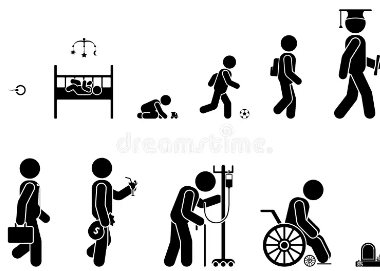Learning Through Art: Human Life Cycle

The intersection of art and the human life cycle presents a compelling framework for understanding personal development across various stages. By engaging with artistic expressions, individuals not only cultivate creativity but also forge connections with their emotions and identities, from early childhood to advanced age. The nuances of these experiences invite a closer examination of how art reflects and influences our growth. What implications might this relationship hold for our understanding of lifelong learning and community engagement? Exploring these dynamics could reveal profound insights into our shared human experience.
The Stages of Human Life
Throughout the journey of existence, the stages of human life unfold like an intricate tapestry, each thread representing unique experiences and lessons.
Infancy milestones mark the foundation of growth, nurturing the senses and fostering connection. As individuals transition into adolescence, creativity blossoms, allowing self-expression to flourish.
This dynamic interplay of growth and exploration shapes identities, igniting the desire for freedom and individuality throughout life’s continuum.
See also: Learning Through Art: Constructing a Phylogenetic Tree
Artistic Expressions in Childhood
Artistic expressions in childhood serve as vibrant windows into a young mind’s unfolding creativity.
Through imaginative play and creative exploration, children channel their thoughts and emotions, transforming simple materials into profound narratives.
Each brush stroke, crayon line, or clay form reflects a unique perspective, fostering not only artistic skills but also essential problem-solving abilities, encouraging freedom of expression in a boundless world of possibilities.
Reflecting on Aging Through Art
As the vibrant expressions of childhood give way to the complexities of adulthood, art remains a powerful medium for reflecting on the journey of aging.
Through evocative imagery and poignant narratives, artists engage in memory preservation and emotional expression, capturing the essence of life’s transitions.
This artistic exploration invites viewers to embrace the beauty and wisdom inherent in aging, fostering a deeper understanding of the human experience.
The Role of Art in Lifelong Learning
Art serves as a dynamic catalyst for lifelong learning, bridging generational gaps and enriching the educational landscape.
Through art education, individuals of all ages engage in creative expression, fostering collaboration and innovation.
This vibrant form of communication encourages exploration and self-discovery, empowering learners to navigate life’s complexities.
Ultimately, art nurtures a lifelong passion for learning, liberating the mind and spirit.
Conclusion
Art profoundly influences the human life cycle, enriching experiences from childhood through old age. Engaging with artistic expressions fosters creativity and enhances problem-solving abilities, contributing to personal growth at every stage. Notably, studies indicate that individuals who participate in artistic activities are 75% more likely to report higher levels of life satisfaction. This connection underscores the importance of integrating art into daily life, nurturing a culture of creativity that can transcend generational boundaries and promote lifelong learning.




